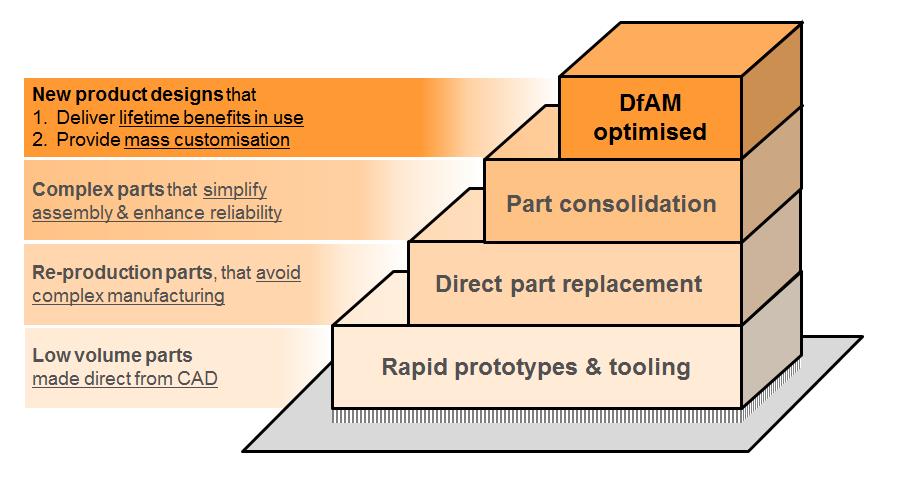Blog post: How can you get the most from additive manufacturing?
3D printing has been used for many years for rapid prototyping, helping to de-risk new designs before committing to expensive production tooling. But the recent arrival of effective metal 3D printing technology provides the opportunity to do more than just make models, but to make real, additively-manufactured production parts. Additive manufacturing (AM) will be a disruptive force in many markets.
Production and lifetime benefits of additive manufacturing
The benefits of AM in metals fall into two categories - production benefits and lifetime benefits.
Production benefits accrue during the manufacturing process itself and include reduced material consumption, shorter lead times, minimal tooling costs, lower assembly costs and the impact of automation.
Lifetime benefits accrue during the use of the product, and come from sources such as reduced weight, higher performance and reliability, as well as better adaptation and a more attractive product. Other lifetime benefits can include service factors such as faster new product launch, improved responsiveness and reduced stocking.
So how can your business benefit from the disruptive capabilities of AM? A good way to think of this is as a series of levels of AM deployment, illustrated in the 'staircase' image above. As you move up through the levels the benefit rises, although so does the associated effort as we increasingly apply Design for AM (DfAM) principles.
Rapid prototyping & tooling
The ground floor is to deploy AM for rapid prototyping and tooling. Prototypes help to de-risk system designs at low cost (a lifetime benefit), avoiding tooling costs whilst the design is still in flux (reducing production costs). AM can also be used for cost-effective manufacture of complex tooling such as conformal-cooled mould tools. The risk at this level is low as there is no intention to use AM to make production parts, but the benefits are constrained by the limited number of parts involved.
Moving up a level, many firms' first foray into AM part production is in direct part replacement. These are re-productions of existing part designs, which seek to replace complex and wasteful manufacturing processes with a simpler AM process route. This allows firms to gain experience with AM in low risk applications and to start to develop a supply chain for AM parts. The benefits here combine lower cost production with a more responsive service to customers.
The next level is where we start taking advantage of the design freedom that AM provides. Part consolidation can be used to transform assemblies into a single sophisticated component. This can greatly simplify manufacturing, whilst providing performance and reliability benefits in use. Reaching this level requires design authority and the ability to requalify a new part and process for production.
DfAM optimised parts
Finally, the top level is where all the capabilities of AM are deployed to produce DfAM optimised parts. At this level we create innovative product designs that are impossible to produce conventionally, and which create new value for customers. This can be in the form of enhanced performance, greater efficiency or perfect adaptation to the circumstances of its use. It can even spark new business models that provide customised designs, locally produced on short lead times to satisfy latent customer needs. There's certainly risk here, but this is where real market disruptions will occur.

